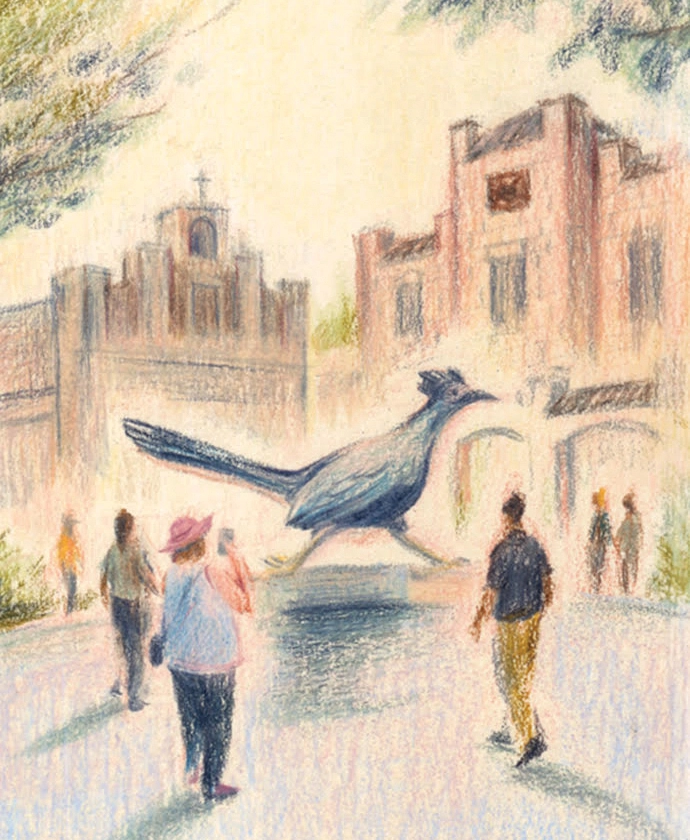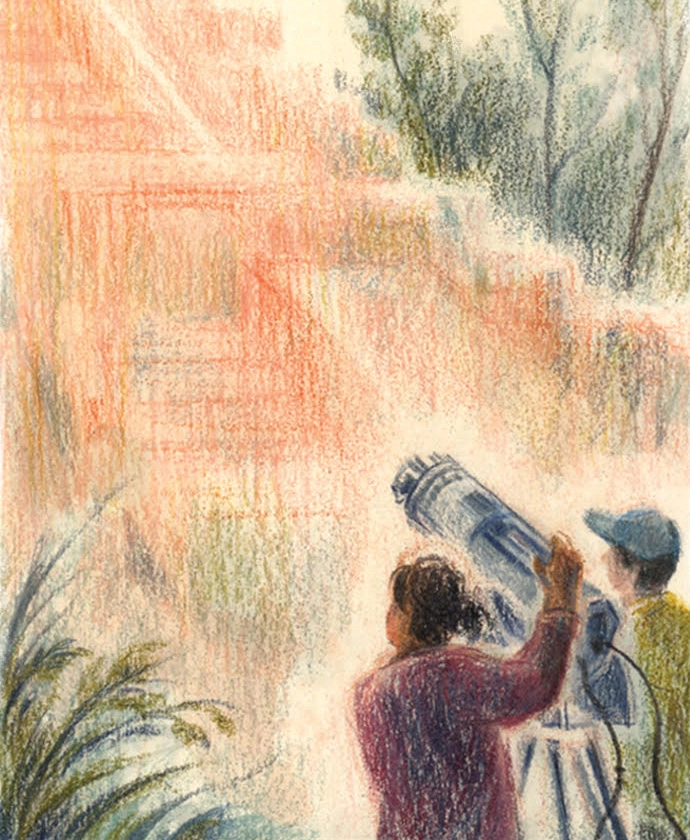When David Woodcock established the Center for Heritage Conservation at the Texas A&M University College of Architecture in 2005, he considered the implications of the name. Some people mistakenly assume historical preservation is about resisting change, he said. But he wanted the center’s name to tell a different story.
“Heritage includes traditions, and conservation is the wise use of resources,” explained Woodcock, who began teaching at the college in 1962 and served as the center’s director until 2006. “So, the role of heritage conservation is to manage change.” One of Woodcock’s main goals was to facilitate collaboration between architecture students specializing in disciplines as varied as landscape architecture, urban planning, civil engineering and construction science.
“If you bring all these experts together and they all speak a different language—the architect only talks architecture and the engineer only talks engineering—you’re going to have problems,” he said. “They should have a common language to foster collaboration.”
In the last few decades, the center has completed many significant projects, including historical documentation work at the Alamo and Alcatraz Island as well as at sites in Mexico, Italy and Norway, among others. Dr. Fabrizio Aimar, who took over as director in 2023 after working on preservation projects in Italy and Albania, has brought an international lens and new ideas to expand the academic research center.
“It’s important to explore how people can actively contribute to preserving heritage,” said Aimar, who holds the Woodcock Endowed Professorship in Historic Preservation. “Preservation goes beyond the significance of the physical structures—it also encompasses the experiences and meanings embedded within them.”
Aimar said that while the center currently receives donor support in the form of scholarships and sponsorships for its Annual Historic Preservation Symposium, there are additional opportunities to contribute. They include supporting an existing endowment and a potential endowed associate directorship position, technology upgrades and ongoing research.
“If you really want to measure the success of an education program, go see where the alumni are,” said Don Swofford ’69, a nationally recognized historic preservation expert who is a regular donor to the center. “Many important preservation practices and agencies in the United States find that Center for Heritage Conservation graduates are highly qualified professionals.”
Discover Notable Current Projects at the Center
Sustainable redevelopment in Fort Stockton, Texas
A group of Texas A&M architecture students have turned their focus to the city of Fort Stockton, a former military outpost in West Texas, as part of the center’s latest preservation project led by Dr. Fabrizio Aimar. Tasked with helping the town produce a redevelopment plan, students are speaking with stakeholders and analyzing downtown buildings to understand not only the architectural features and context in which the buildings were used but also any potential weaknesses and opportunities that will need to be considered before redevelopment work begins.
The team is considering the potential for adaptive reuse in their recommendations. They are noting how buildings evolved over the years—as in the case of a former bank building that is now home to a bar—as well as commonly used building materials such as brick, adobe and concrete. “As architects, we work on the potential of the buildings, so we’re always trying to imagine what a building can be,” Aimar said. “We’re envisioning a new future for downtown Fort Stockton.”
 Dr. Fabrizio Aimar and College of Architecture students are working on a redevelopment plan for downtown Fort Stockton.
Dr. Fabrizio Aimar and College of Architecture students are working on a redevelopment plan for downtown Fort Stockton.
Harnessing new technology to document Mayan ruins in Belize
Architects traditionally relied on pen, paper and a tape measure to create drawings to scale. But thanks to rapid technological innovation, terrestrial laser scanners—sometimes combined with an iPhone—can now create a three-dimensional rendering in a fraction of the time. It is one of the surveying methods architecture professor Robert Warden ’86 and his students have been using in recent years as they analyze Mayan ruins as part of a decades-long research program in northwestern Belize.
The Maya Research Program was founded in 1992 by Thomas Guderjan, a seasoned archaeologist and anthropology professor at The University of Texas at Tyler. Since then, it has brought together thousands of students and volunteers to document structures and artifacts belonging to the ancient civilization. Warden, who has participated in the program every summer since 2008, said the experience teaches students to adapt and collaborate.
“In everyday practicing architecture, you’re working with multiple disciplines,” he said. “Getting this type of international exposure and working with experts in different fields is excellent training for our students.”
 Since 2008, Professor Robert Warden ’86 has been taking students to Belize to analyze Mayan ruins as part of an international research collaboration.
Since 2008, Professor Robert Warden ’86 has been taking students to Belize to analyze Mayan ruins as part of an international research collaboration.
Preserving a schoolhouse in Wheelock, Texas
For more than 100 years, the Wheelock School House has been a gathering place in the small community for which it is named—first as a school and later as a community center hosting weddings, reunions and quilt shows. But after years of neglect, the windows no longer shut and the roof was leaking. Priya Jain, then the associate director of the Center for Heritage Conservation, stepped in after she was approached by the nonprofit Friends of the Wheelock School House in 2017, beginning an ongoing preservation project.
“Most rural communities don’t have access to preservation professionals in bigger cities,” Jain said. “This project has brought our expertise to a small community while giving students a valuable professional experience just 30 minutes from campus.”
Students in Jain’s architecture classes conducted a detailed survey of the building to determine the materials, fixtures and building techniques used throughout the house and developed a master plan to aid contractors in conducting the restoration. Last year, Friends of the Wheelock Schoolhouse won a $100,000 award from the Texas Historical Foundation for the building restoration.
 Under Priya Jain's direction, architecture students have helped develop a master plan to restore the historic Wheelock School House.
Under Priya Jain's direction, architecture students have helped develop a master plan to restore the historic Wheelock School House.
Send Message to Evelyn
Thank you for submitting a contact form!
Contact form was unable to submit.